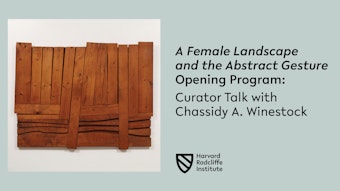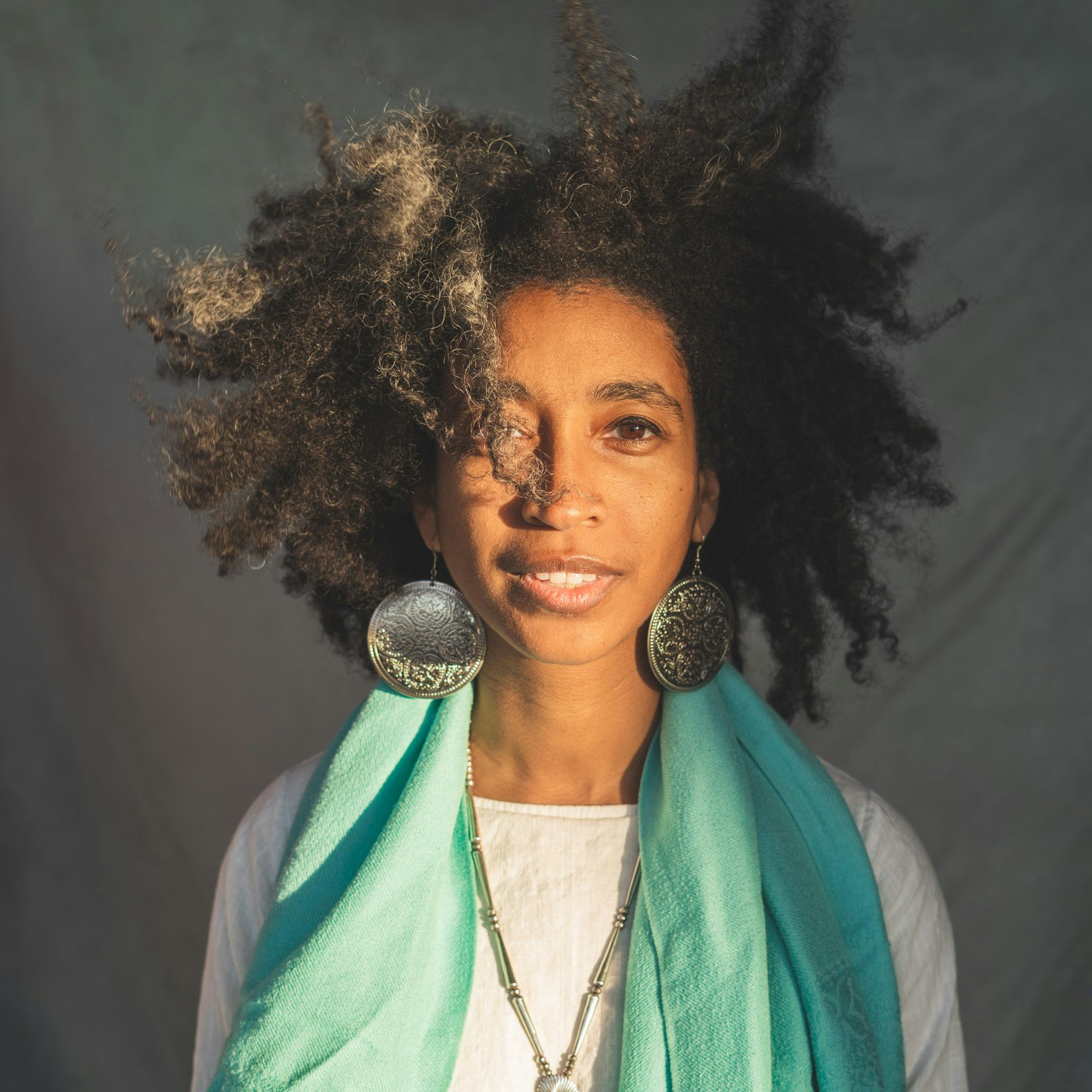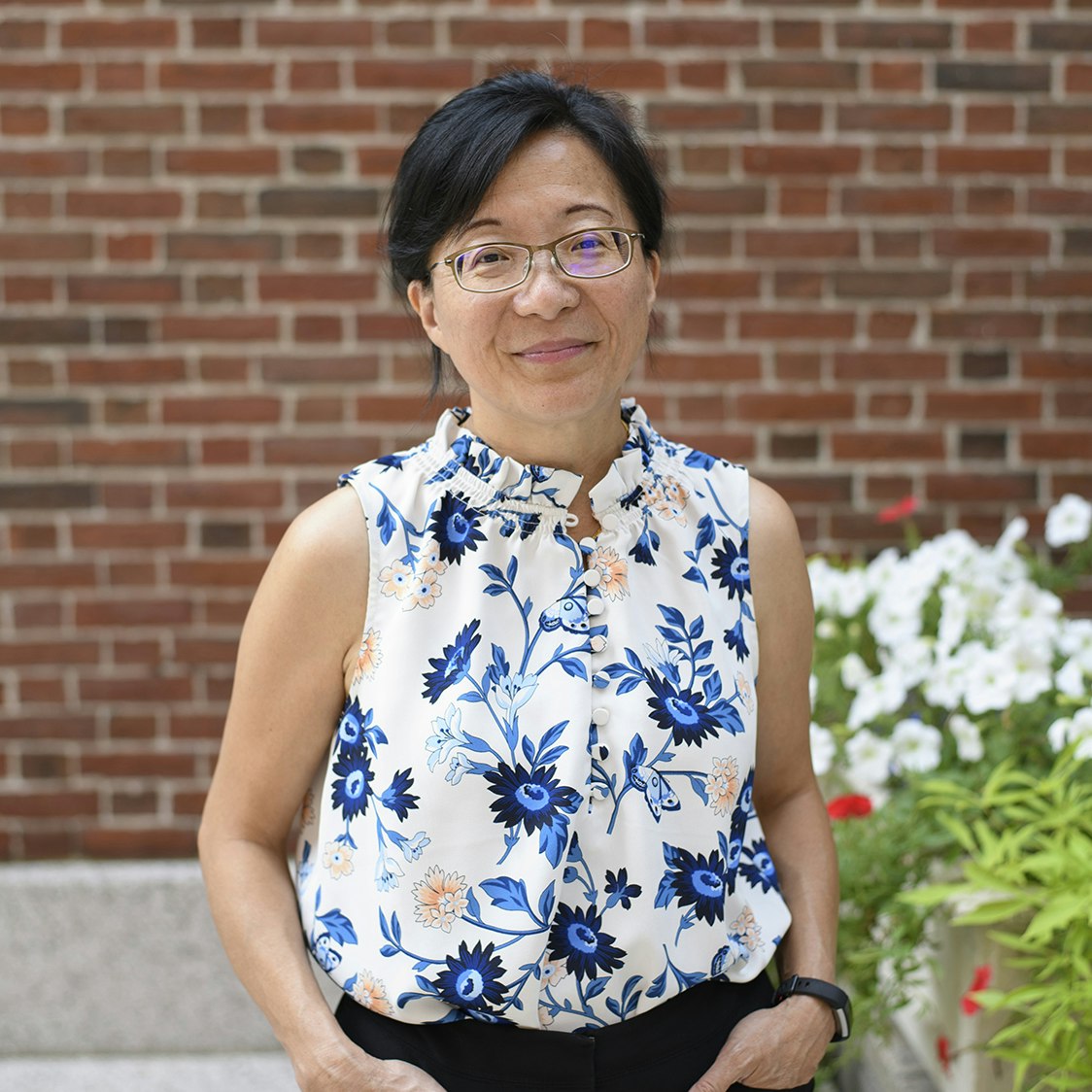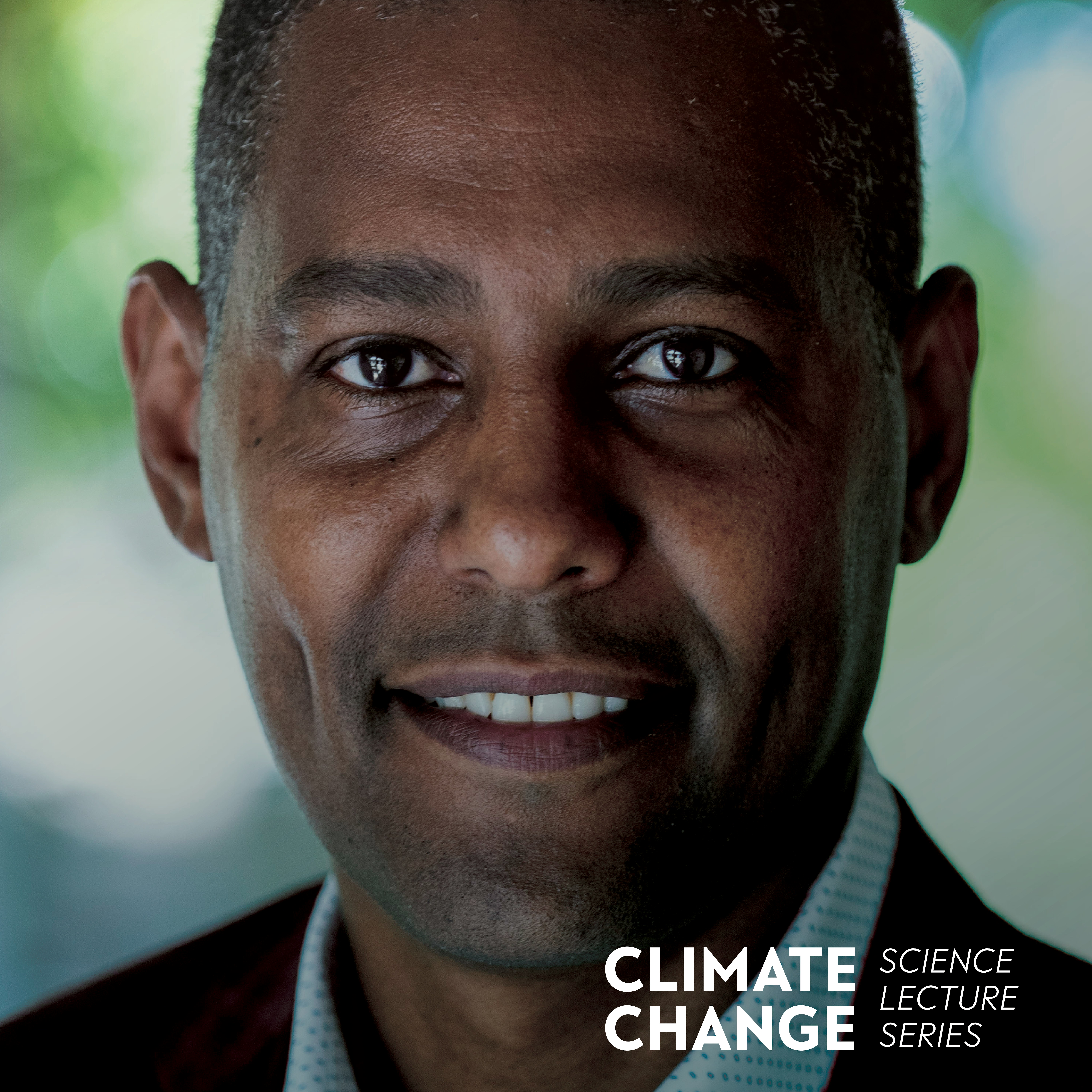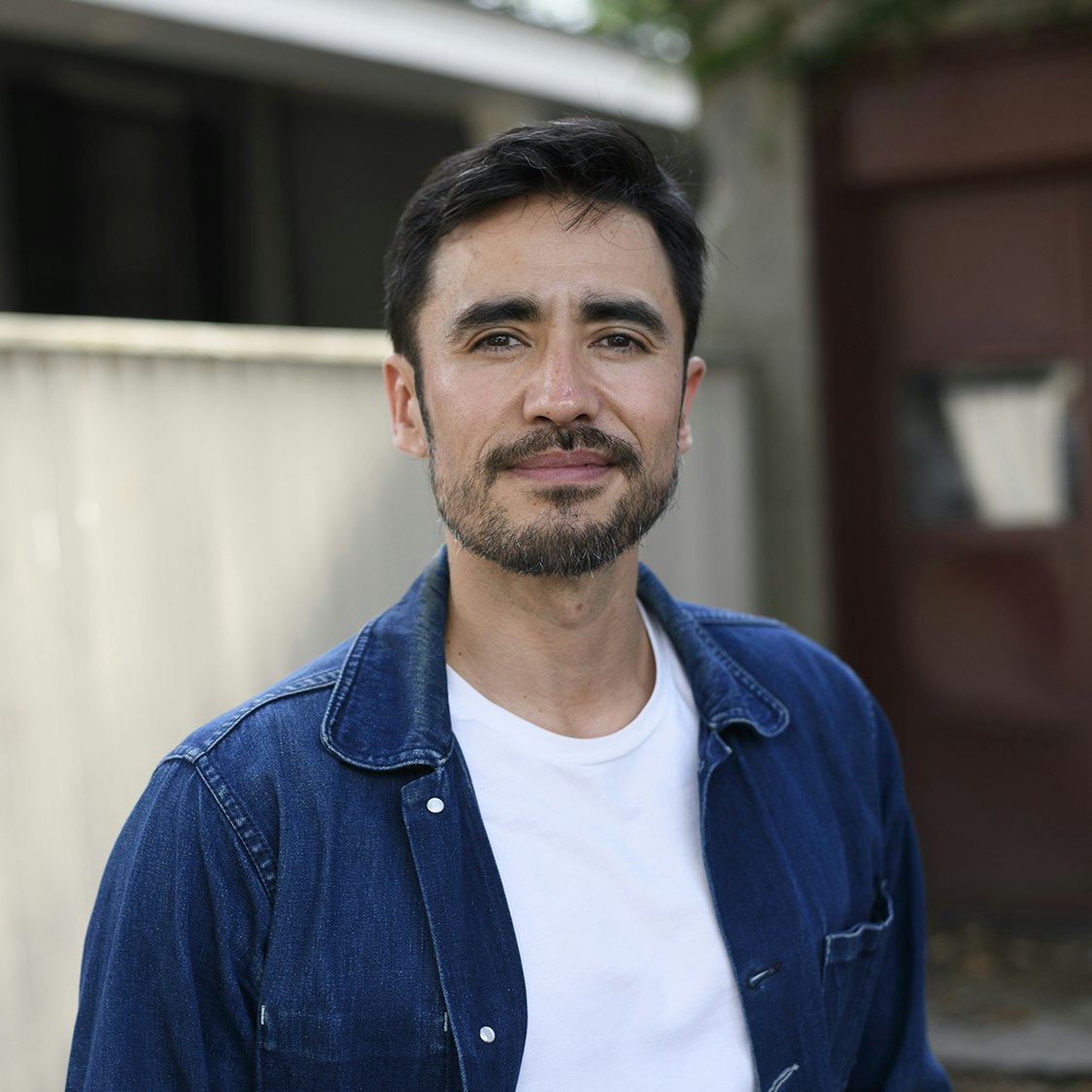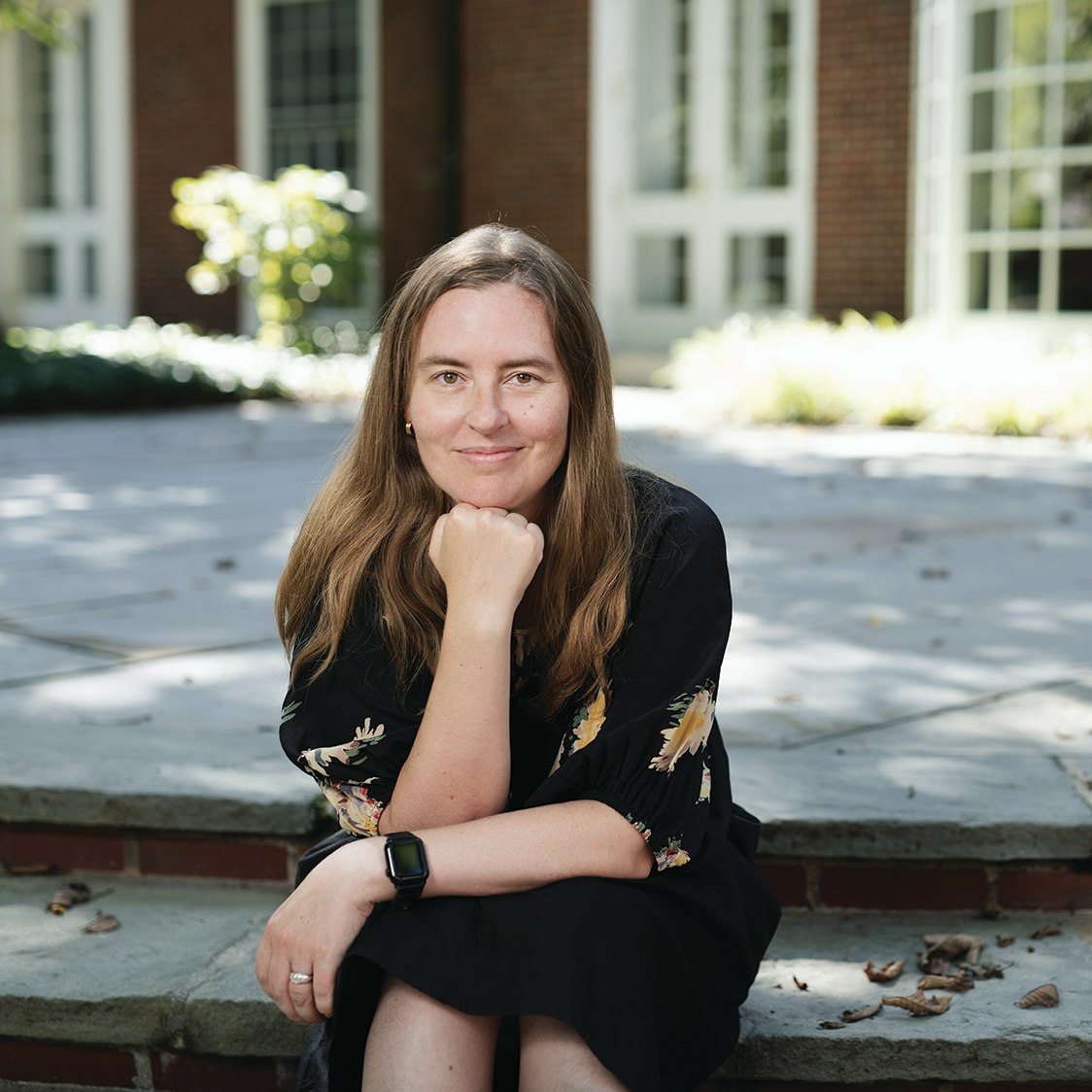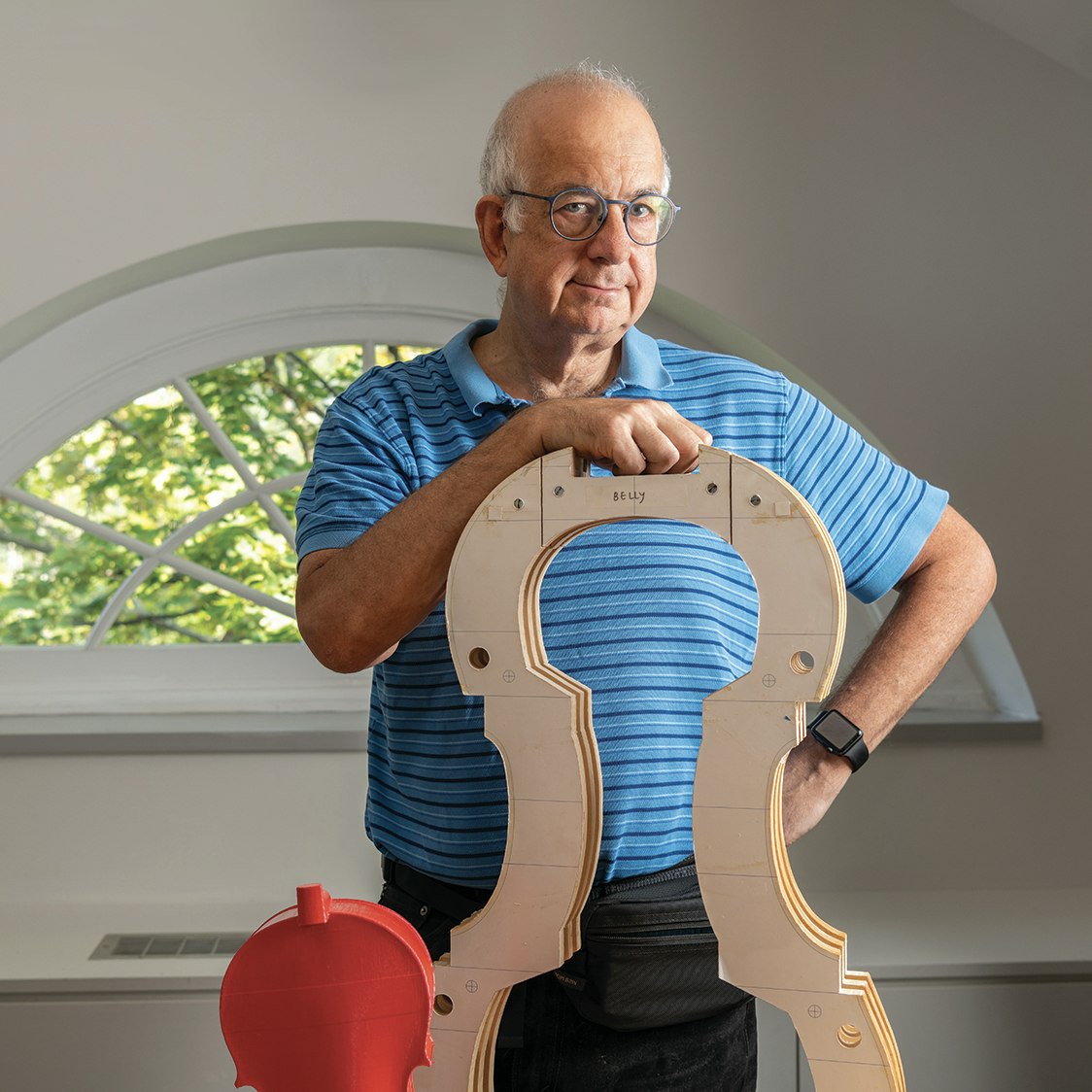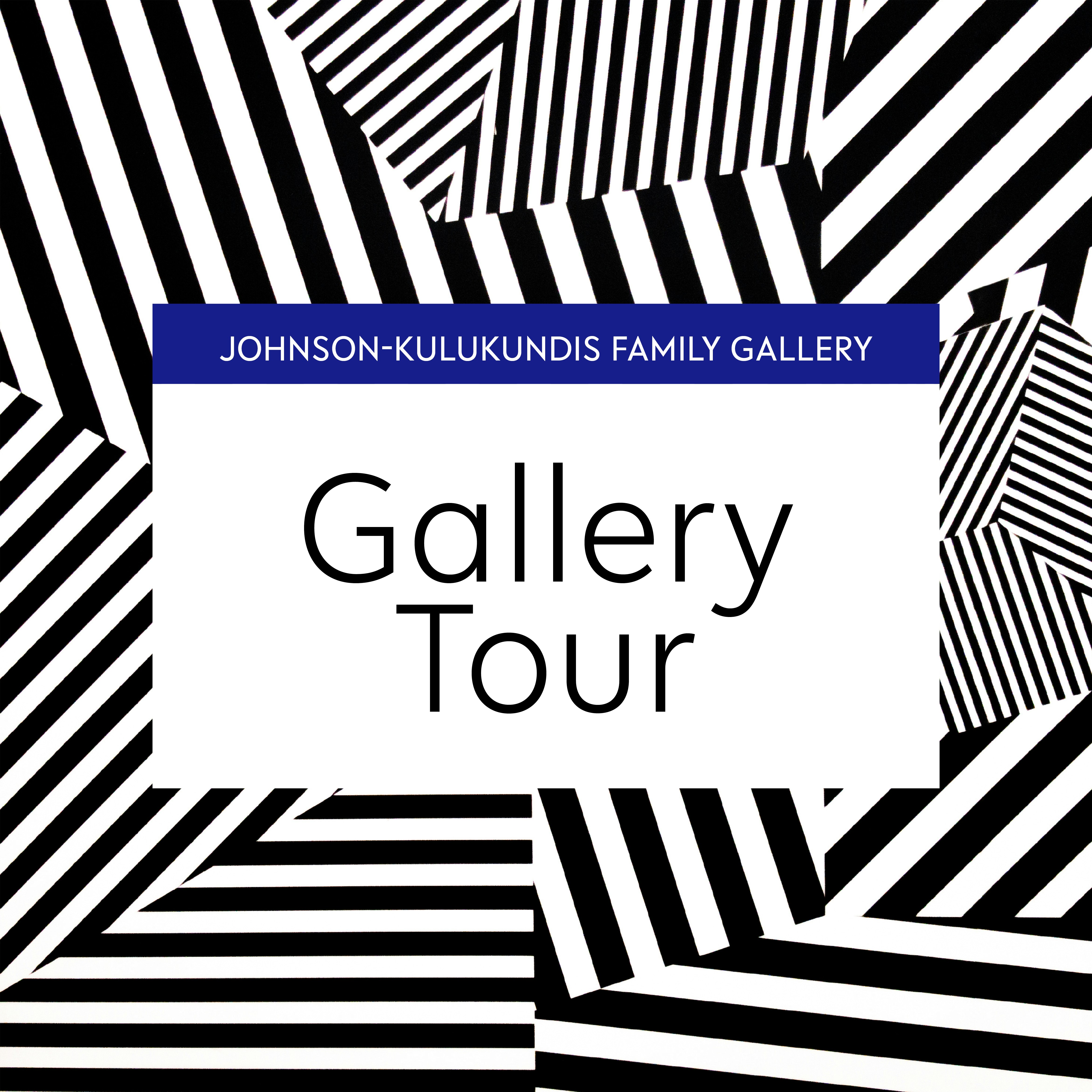A Female Landscape and the Abstract Gesture
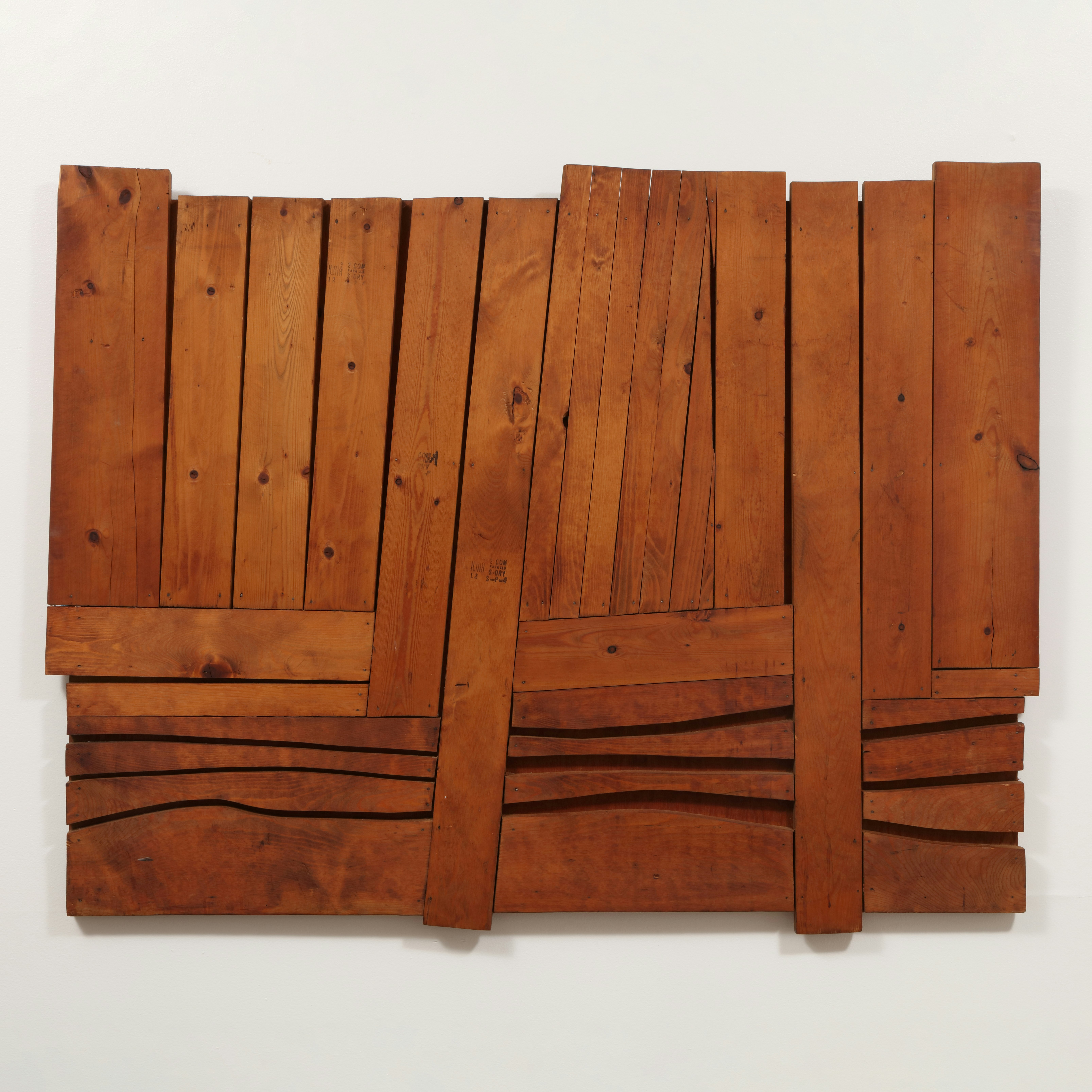
Throughout the 20th century, many artists began to replace traditional artistic gestures with other operations, thereby creating new abstract languages and vocabularies. Harvard Radcliffe Institute’s exhibition A Female Landscape and the Abstract Gesture explores how four artists nailed, glued, unraveled, twisted, folded, pierced, tied, and, most importantly, fastened—all to aesthetic effect—to highlight the labor of art making. Centering on the work of Mildred Thompson, the exhibition represents the physical action of creating artwork and, in Thompson’s words, makes the invisible visible. The works in this exhibition demonstrate the ways in which Thompson, Howardena Pindell, Maren Hassinger, and Liliana Porter navigated art making during times of social rupture and sought their way through with novel, reparative gestures.
The exhibition takes its title from Thompson’s six-foot-long accordion-fold book A Female Landscape (1977), a gift from the artist to the writer, philosopher, and civil rights activist Audre Lorde, which is on display in the Johnson-Kulukundis Family Gallery. The rarely exhibited artwork, housed by the Spelman College Archives, abstractly renders in pen and ink the intimate details and contours of a woman’s body. This singular work is joined by a selection of Thompson’s etchings and artworks made of wood, all originating from her estate and including a new acquisition by the Harvard Art Museums. The wood works highlight Thompson’s unique use of natural materials to create complex, evocative reliefs that exist between painting and sculpture. Through the repetitive fastening of parts into a whole, Thompson’s linear formalism is counterbalanced by the hyper-presence of organic material. The exhibition highlights Thompson’s deft hand and use of diverse techniques to create her own idiosyncratic abstract language.
Thompson’s artworks appear alongside prints, sculptures, and assemblages by Howardena Pindell, Maren Hassinger, and Liliana Porter. Pindell’s artworks are created by painstakingly attaching thousands of chads to paper, evoking repetitive tasks that gesture toward “women’s domain” of administrative labor and domestic craft. Hassinger’s works employ other deconstructive and, significantly, reconstructive gestures. By unraveling and then weaving together pieces of industrial-grade wire rope, Hassinger calls to mind elements of the natural landscape and the human body in these rarely exhibited works. Porter’s deceptively minimal print works belie the intricate play of materiality in the many cuts, folds, piercings, and bindings that marry the virtual and the real.
The exhibition is accompanied by an essay by visiting curator Chassidy Winestock, whose doctoral dissertation focuses, in part, on abstraction in the work of the four artists. Thompson, Pindell, Hassinger, and Porter have, since the 2000s, received increased recognition, and in the 1960s to 1970s, fastened, while highlighting the materiality of the line. They responded to minimalism’s continuing influence and the period’s attention to additive methods of making while attaching those interventions to movements in this era of profound change.
Harvard Radcliffe Institute gratefully acknowledges the Johnson-Kulukundis Family Endowment Fund for the Arts, which is supporting this exhibition.
Free and open to the public.
Harvard Radcliffe Institute and the visiting curator Chassidy Winestock are grateful to Howardena Pindell, Maren Hassinger, Liliana Porter, and the late Mildred Thompson; the Spelman College Archives at the Women’s Research and Resource Center and Spelman College; the archivist Holly A. Smith; Melissa Messina, the curator of the Mildred Thompson Estate; Mary Schneider-Enriquez; Carrie Lambert-Beatty; Jennifer L. Roberts; Harvard Art Museums; Galerie Lelong & Co.; the Susan Inglett Gallery; the Garth Greenan Gallery; and the Johnson-Kulukundis Family Endowment Fund for the Arts.
Chassidy A. Winestock is a historian of modern, contemporary, and American art and is currently completing her PhD in the Department of History of Art and Architecture at Harvard University. Her dissertation centers on the work in the 1960s and 1970s of Mildred Thompson, Howardena Pindell, Maren Hassinger, and Liliana Porter. Winestock has served as a graduate student intern in the Modern and Contemporary Art Division of the Harvard Art Museums, where she worked on the exhibition Crossing Lines, Constructing Home: Displacement and Belonging in Contemporary Art with the curators Mary Schneider-Enriquez and Makeda Best. Her writing has accompanied a number of exhibitions of works by modern and contemporary artists, and in 2021, she contributed to phase one of the Harvard Art Museums’ ReFrame initiative. Winestock earned a JD from The University of Michigan Law School and received a BA in literary studies from The University of Texas at Dallas. She has worked as an attorney and an educator in Atlanta and taught courses at Harvard.
Mildred Thompson (1936–2003) was born in Jacksonville, Florida, and received a BA from Howard University in 1957. After beginning her professional career in the United States, Thompson lived and worked in Germany from the mid-1960s to the mid-1970s, returning to the United States to complete an artist’s residency with the city of Tampa, Florida in 1974. She worked in a variety of media throughout her decades-long career, and, in addition to maintaining a sustained sculptural practice, she was an accomplished draftswoman, printmaker, painter, educator, and writer. Her work has been exhibited widely in both solo and group exhibitions and is included in collections worldwide, including the Harvard Art Museums, the Museum of Modern Art, and the Brooklyn Museum. This exhibition marks the return of Thompson’s wood works to Harvard, where several were exhibited in the late 1970s.
Howardena Pindell (b. 1943) was born in Philadelphia and is now based in New York. She studied painting at Boston University and received her MFA from Yale University. Her wide-ranging practice spans media, including installations, paintings, works on paper, and video. Pindell’s work often features textured surfaces, and, since the late 1970s, she has been best known for large-scale, process-oriented, mixed-media works and smaller-scale works composed of chad-encrusted substrates. She is also an activist and writer. Her work is held in the collections of numerous major national and international institutions, including the Harvard Art Museums, the Museum of Modern Art, and the Whitney Museum of American Art. Pindell is a Distinguished Professor at the State University of New York, Stony Brook, where she has taught in the art department since 1979. She worked for over a decade at the Museum of Modern Art in New York, where she was an associate curator of prints and illustrated books.
Maren Hassinger (b. 1947) was born in Los Angeles. She received a BA from Bennington College in 1969 and an MFA from the University of California, Los Angeles in 1973. For two decades she was the director of the Rinehart School of Sculpture at the Maryland College of Art. Hassinger is now based in New York and her practice expands upon formalisms to arrive at an encompassing method and process. During her career she has worked in a variety of media, including sculpture, printmaking, installation, drawing, performance, and video/film. Notably, her sculptural practice has consistently engaged with connections between the industrial and the natural. She has exhibited in the United States and abroad, and has works in numerous collections, including the Whitney Museum of American Art, the Museum of Modern Art, and the Williams College Museum of Art.
Liliana Porter (b. 1941) was born in Buenos Aires and studied at the Escuela Nacional de Bellas Artes in Buenos Aires and the Universidad Iberoámericana in Mexico City. She has lived and worked in New York since the mid-1960s and was, until 2007, a professor at Queens College, City University of New York. Porter studied printmaking and cofounded the New York Graphic Workshop with Luis Camnitzer and José Guillermo Castillo in 1964. She has worked for decades in a variety of media, including painting, drawing, video, installation, photography, and theater. Porter’s art explores differences between object and image and works to theorize the lines between reality and illusion and issues of representation and meaning. Her work has been widely collected and exhibited in the United States and abroad and appears in the collections of the Museum of Modern Art, the Harvard Art Museums, and the Blanton Museum of Art, among many others.
Visit
Free and open to the public.
We encourage visitors to reserve a time for their visit to guarantee access.
Request a Copy of the Exhibition Booklet
If you are interested in receiving a copy of the book that accompanies this exhibition, please complete this short online form. Note that, due to demand, we cannot guarantee that books will be available to everyone who requests one. We will notify you if a copy is being mailed to you.
